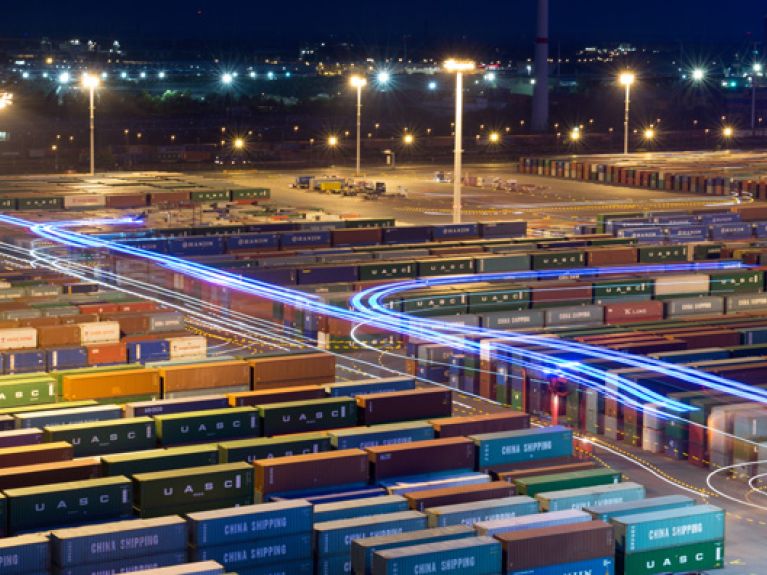Trends and perspectives
The importance of the Asia-Pacific economic region for the European Union and the German economy

In the next 20 years, according to a 2014 global market prognosis, airlines from the Asia-Pacific region will require over 12,000 new passenger and cargo aircraft. That represents a 39% share of all the new aircraft that will be delivered worldwide during that period. It also means the region will overtake markets in Europe, North America and the Middle East. These impressive figures demonstrate once again the importance of the Asia-Pacific market – also for European industry.
Airbus, the European aircraft manufacturer, has big market shares in the Asia-Pacific region. Over 27% of all its orders have come from the region. In 2013, Airbus further strengthened its position with 379 firm orders. The company also delivered 232 new aircraft to customers in the region during the course of the year. That represents a 37% share of all the new aircraft delivered in the region.
The European Union recognised the importance of the Asia-Pacific market long ago. However, because negotiations on a free-trade agreement with ASEAN have been in abeyance since 2010, the European Commission is increasingly relying on bilateral free-trade agreements. The enormous potential they offer is shown by the agreement with South Korea that came into effect in 2011. In its first year EU exports to South Korea rose by 16.2% while EU imports from South Korea grew by 4.7%. The relatively low growth in imports was solely due to a weak economy in Europe. However, it is now taking off again.
This trend is also reflected in the latest German trade figures with the Asia-Pacific region. After foreign trade experienced a slight downturn in 2013, trade flows increased again in the first half of 2014. Exports were able to grow significantly with a 3.7% increase compared to the same period in the previous year, which meant they rose more strongly than German exports overall. There was also a positive development in imports, which grew by 1.1%. In all, trade with the Asia-Pacific region makes up roughly 15% of all German foreign trade, and this proportion is rising.
The driving force behind German export business in the first half year was the People’s Republic of China, although economic growth in the People’s Republic has decreased slightly in recent quarters. German exports to Japan and South Korea have also shown upward movement. On the other hand, decreases were recorded in Germany’s foreign trade with India and the ASEAN countries. However, there are differences between the ASEAN countries. German exporters experienced strong falls, above all, in Indonesia and Malaysia, whereas German-Philippine trade presented a positive first half year. Remarkably, imports from Myanmar rose by 62.9% in the first six months.
The Asia-Pacific Committee of German Business (APA) aims to set new priorities at the Asia-Pacific Conference in Ho Chi Minh City, Vietnam, from 20 to 22 November 2014. Its motto is “Understanding Trends and Perspectives”. The conference, which has been held in a different Asian metropolis every two years since 1986, has become the largest networking event outside Germany that attracts both political and business decision-makers from Germany and the region, including the heads of the German Missions Abroad. It will be opened by APA Chairman Hubert Lienhard, CEO of German technology company Voith, and Federal Economics Minister Sigmar Gabriel. ▪
Martin Orth
Hubert Lienhard
Hubert Lienhard, born in 1951, has been CEO of the Voith technology group since 2008. He became Chairman of the Asia-Pacific Committee of German Business (APA) in 2014. It is the first time that the CEO of a family business heads the committee. “We must continue our efforts to deepen our strong local presence in Asia. Companies that are not at home in Asia will be internationally unimportant,” said Lienhard when he took office.

